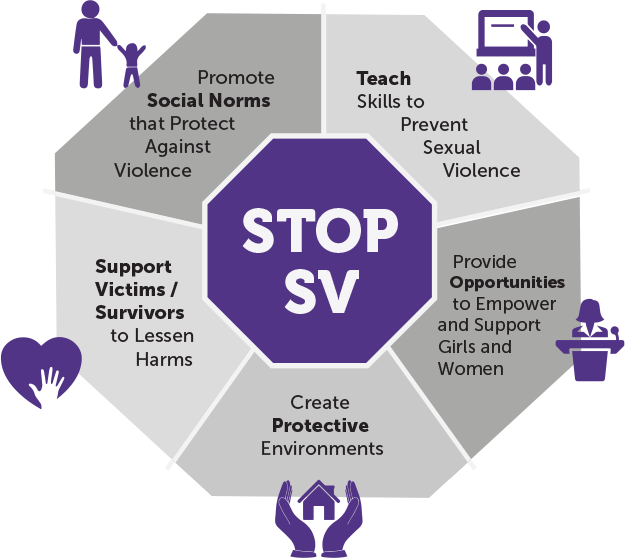Resources
There are several resources on VetoViolence that can support your sexual violence prevention work. VetoViolence is CDC's online source of free violence prevention trainings, tools, and resources.
 Visit EvaluACTION to learn tips on evaluating your sexual violence program or policy, or create, save, download, and edit a new logic model and evaluation plan.
Visit EvaluACTION to learn tips on evaluating your sexual violence program or policy, or create, save, download, and edit a new logic model and evaluation plan.
 Use the Social Norms resource to develop a campaign that helps you address and change attitudes, beliefs, and behaviors around sexual violence to help people adopt new, healthier social norms.
Use the Social Norms resource to develop a campaign that helps you address and change attitudes, beliefs, and behaviors around sexual violence to help people adopt new, healthier social norms.
 Check out the online Dating Matters® Training to help you learn how to prevent teen dating violence.
Check out the online Dating Matters® Training to help you learn how to prevent teen dating violence.
 To learn the fundamentals of effective violence prevention methods, visit Principles of Prevention to help you move from problems to solutions.
To learn the fundamentals of effective violence prevention methods, visit Principles of Prevention to help you move from problems to solutions.
 Learn more about the four-level Social-ecological Model to understand the potential benefits of sexual violence prevention strategies and explore the sexual violence prevention model.
Learn more about the four-level Social-ecological Model to understand the potential benefits of sexual violence prevention strategies and explore the sexual violence prevention model.
There are also partner resources that can support your sexual violence prevention work.
 Visit PreventConnect for podcast and e-learning opportunities.
Visit PreventConnect for podcast and e-learning opportunities.
 Visit National Sexual Violence Resource Center for up to date news from the field and a library of additional resources.
Visit National Sexual Violence Resource Center for up to date news from the field and a library of additional resources.
 Getting attention for prevention. This brief, developed by the National Sexual Violence Resource Center and Berkeley Media Studies Group, provides guidance on how to frame sexual violence and construct messages about prevention.
Getting attention for prevention. This brief, developed by the National Sexual Violence Resource Center and Berkeley Media Studies Group, provides guidance on how to frame sexual violence and construct messages about prevention.













